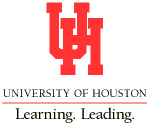 |
Undergraduate
Colloquium |
 |
 |
> Current AY
> Previous talks
> TX-LA conferences:
— UH,
Nov. 11-12, 2017
— LSU,
Oct. 5, 2018
— TAMU,
Oct. 19-20, 2019
— online,
Oct. 31-Nov. 1, 2020
— UH,
Mar. 26-27, 2022
— LSU,
Mar. 25-26, 2023
— TAMU,
Mar. 23-24, 2024
— UH,
Mar. 22-23, 2025
> Putnam Math Competition
>
Math Colloquium
|
 |
 |
 |
 |
|
 |
 |
 |
 |
Print
Announcement
Mircea Ionescu
OneSubsea (a Schlumberger company)
Mathematics for all Markets
March 7, 2019
5:30pm AH 108
|
Abstract
|
|
|
|
The use of mathematical models in various fields such as engineering
applications, financial instruments and contracts, risk and decision
making, insurance, optimization and others has seen a massive
proliferation since the advancement of numerical methods and distributed
computing power. Accurately modeling a highly complex and nonlinear
process or event is a difficult task that requires good judgment in
keeping a healthy balance between simplifications and approximations
needed to solve the model and capturing the essential response/behavior
of the said process or event. The practitioner of mathematical modeling
is constantly faced with this task of choosing which aspects of the
process are most important and which can be neglected in order to arrive
at a solution that best describes the problem to be solved and to
interpret and validate the model results.
This talk will provide some examples of practical engineering problems
encountered when designing oil and gas subsea equipment in which
mathematical modeling was extensively applied to verify and validate the
operational limits of the subsea equipment. Examples of mathematical
models from other science fields such as biomedical engineering, finance,
and gaming theory will also be briefly presented. Work opportunities in
the industry/academia will be discussed and a list of suggested readings
that touch on the subject of mathematical modeling will be provided.
Biographical note:
Mircea Ionescu has been living in Houston for almost 20 years and
attended the University of Houston first as a computer science student
and then switching to mechanical engineering. He received the degrees of
Bachelor of Science in mechanical engineering and Bachelor of Science in
mathematics in 2006. During his junior year he became interested in
computational fluid dynamics related to blood flow in arteries which led
him to pursue a Ph.D. degree in mechanical engineering under the guidance
of Prof. Ralph Metcalfe (also at the University of Houston). After
graduating in 2012, he joined OneSubsea, a Schlumberger company, where he
is performing solid mechanics simulations of subsea equipment using
finite element methods.
Snacks will be served.
|
|
 |
 |
 |
 |
|
|

